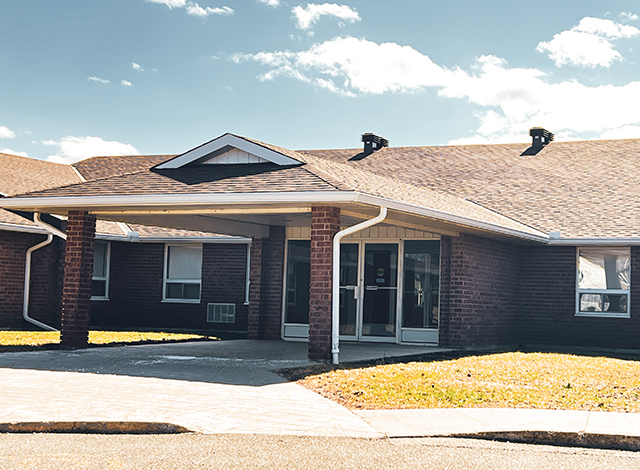Homelessness remains a top priority for Lanark County, and with fresh provincial funding, the county is ramping up programs to meet the urgent need.
“The Homelessness Prevention Program (HPP) is 100 per cent provincially funded and provided to service managers, like Lanark County, to support programs and services to prevent, reduce and end homelessness,” said Emily Hollington, director of social services at Lanark County.
Last year, the county received $2.495 million through the HPP to support a range of homelessness initiatives.
“In April 2024, county council approved the opening of 11 beds at Bridge House, in partnership with Lanark County Mental Health. This was funded with $296,000 from HPP and $120,000 in municipal funding,” Hollington said.
The HPP funding also supports three in-house case workers, one based at Lanark County Mental Health, after-hours services through Victim Services, and updates to the county’s by-name list of homeless individuals. It also funds hotel and motel stays for people in crisis.
Bridge House: A housing-first solution
Bridge House, launched in summer 2024, is a transitional home based in the former Willowdale Retirement facility in Smiths Falls. With further investment, it has doubled in size.
“Willowdale presented a unique opportunity; a large, modern space needing minimal renovations,” said Smiths Falls Mayor Shawn Pankow.
To access Bridge House, individuals must be on the county’s by-name list.
“People can self-refer through a form on our website. We also have strong partnerships with community agencies that make referrals,” said Brooke Coutts, community support services manager.
The by-name list has grown steadily, reflecting a clearer picture of homelessness in Lanark County.
“We started in 2021, and I’ve really seen the system improve. We’re getting a solid understanding of what homelessness looks like here. It’s not perfect, but we’re heading in the right direction,” Coutts said.
When Bridge House opened, there were 62 names on the list. Now there are 105.
“These are people who, for whatever reason, found themselves without a home, found themselves in a difficult situation,” Pankow said. “In one case, everything was fine until a serious accident left the person unable to work. He was self-employed and had nothing to fall back on. Bridge House provides a place they can call their own.”
A foundation for change
The housing-first model focuses on securing stable housing before addressing other issues such as health, employment or education.
“When you have a place to stay, you’re no longer worried about someone stealing your stuff or freezing overnight. When people aren’t focused on survival, they can begin to work on other parts of their life,” said Tom McKenna, manager of mental health services, who oversees Bridge House.
Clients are already seeing results. Testimonials highlight real progress.
“I managed to re-enrol in school and update my resume,” said one resident.
“These small things were just dreams when I was homeless,” added another.
Pankow shared a striking example.
“I know one individual who had been living in a shed. He struggled just to find a bathroom or take a shower; basic dignities that weren’t available. When life is like that, every moment is a crisis.”
HPP funding not only covered renovations but also pays Bridge House’s rent and operational costs.
“We receive a lump sum annually from the county for staffing, security and rent. Clients also contribute a monthly participation fee based on their income or shelter allowance,” McKenna said.
Early signs of success
Though long-term data is still emerging, early signs are promising. In February 2024, the county spent about $11,000 on hotel accommodations for unhoused individuals. By November, that number had dropped below $2,000.
“We’ve seen a significant reduction in hotel use, partially attributed to Bridge House. That created savings in the HPP budget, which gave us more flexibility,” Hollington said.
The expansion, approved by county council in December 2024, was made possible by an additional $242,980 in municipal funding.
Upon entry, clients undergo assessments to evaluate mental and physical health, life skills and substance use. Within six months, improvements are evident.
“I can tell you the average assessment scores, whether it’s anxiety, depression or daily living, have improved by 20 per cent,” McKenna said.
Residents are turning those gains into momentum. Some have found work; others are pursuing education or rebuilding family relationships.
Looking ahead
Bridge House is transitional, not permanent. There’s no strict time limit, but the goal is to help residents find stability and move on when they’re ready.
One resident has already made that leap, moving into market housing with support.
The county supports this next step through its rent-geared-to-income program, which has long served local residents.
Despite initial concerns from neighbours, ranging from property values to crime, Bridge House has proven itself.
“There was a lot of fear when Bridge House was announced,” said Pankow. “But since opening, there’s been little police involvement and not a single complaint. All these people wanted was a safe, dignified place to lay their head.”



